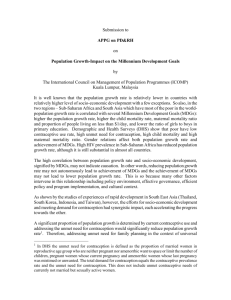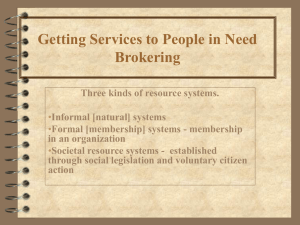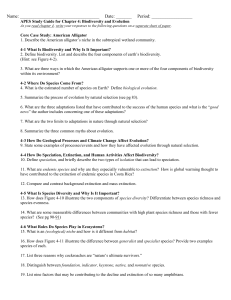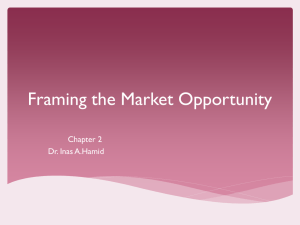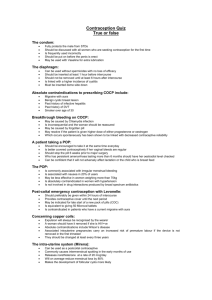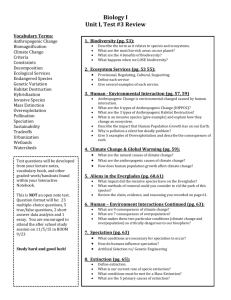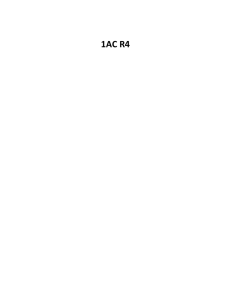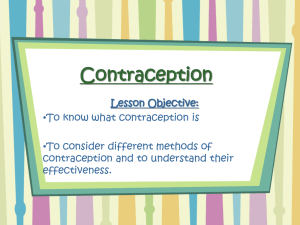Chapter_13___14ol
advertisement
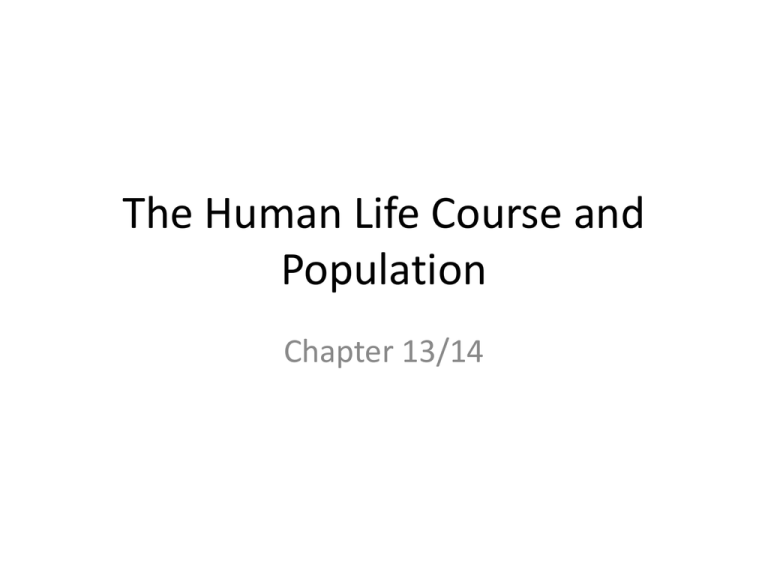
The Human Life Course and Population Chapter 13/14 7 Billion people • National Geographic • What’s Your Number? The World at 7 Billion 7 Billion people • Issues of contraception—who gets to make up the rules? • Hans Rosling – "There was an unmet need for contraceptive services, of course. But there was also an unmet need for health services and all kinds of other services which did not get attention. The focus became contraception." –BBC 7 Billion people • "Not to have a full set of health services meant women were either unable to use family planning, or unwilling to because they could still expect half their kids to die by the age of five.” --BBC • Worldwide, major causes of childhood death are infectious diseases exacerbated by poor nutrition • 70% of deaths (birth to 4 years old) are due to diarrhea, respiratory infections, malaria – …..and diseases for which immunizations are available • 83% of the deaths are indirectly attributable to malnutrition • Leading causes of childhood death in the US and western Europe are accidents, followed by preterm births 7 Billion people • "There was an unmet need for contraceptive services, of course. But there was also an unmet need for health services and all kinds of other services which did not get attention. The focus became contraception." –BBC • To feed large sedentary populations, easily producible, cheap foods are needed and were developed when homo sapiens became sedentary… The “Paleo” Diet • Prior to 10,000 years ago… – High in Animal Protein, low in fat…particularly saturated fat – High in complex carbohydrates (including fiber) • Human health declined in most parts of the world, beginning about 10,000 (The Neolithic Transition) years ago… • The Ability to Store Fat – Feast and Famine adaptations in the Mesolithic lead to obesity and health problems in the Paleolithic Once adaptive, now maladaptive What are the cheapest and most highly caloric foods you can buy? Once adaptive, now maladaptive 56% corn • 80% of new cases of type 2 diabetes appearing between now and 2025 will be in developing nations • Type 2 diabetes, linked to poor diet and inadequate exercise, occurring in children as young as 4 Preagricultural, Contemporary American, and Recently Recommended Dietary Composition Nutritional Requirements for Growth • Nutrients needed for growth, development, and body maintenance include: proteins, carbohydrates, fats, vitamins and minerals. • The amount we need of these nutrients coevolved with foods available to humans throughout evolutionary history. • The specific pattern of amino acids required in human nutrition (essential amino acids) reflects an ancestral diet high in animal protein. – The 9 (of 22) amino acids must be obtained from the food we eat because they are not synthesized in the body in sufficient amounts. Factors Influencing Growth and Development • Genetics – set the underlying limitations and potentials for growth and development – Environmental factors can influence growth and development, but an individual can not exceed their genetic potential. • Hormones – produced by endocrine glands – Growth hormone has an impact on almost every cell in the body. – Cortisol, elevated during stress, suppresses normal immune function during high levels The Human Life Cycle 1. Prenatal begins with conception and ends with birth. 2. Infancy is period of nursing. 3. Childhood, or juvenile phase, is period from weaning to sexual maturity (puberty in humans.) 4. Adolescence is from puberty to the end of growth. 5. Adulthood is the completion of growth. 6. Menopause beginning one full year after the last menstrual cycle Life Cycle Stages for Various Animal Species Diameter of Birth Canal and Head Length and Breadth of Newborns Providing for Juveniles (Table 13-3) Lion Baboon Macaque Chimpanzee Human Populations !Kung Yanomamo Paleoindian Percent Who Survive Weaning Adolescence 28 15 45 33 42 13 48 38 80 73 86 58 50 50 Life Spans (Table 13-4) Organism Bristlecone pine Tortoise Human Blue whale Indian elephant Gorilla Domestic dog Rabbit Rat Approximate Maximum Life Span (in years) 5,000 170 120 80 70 39 34 13 5 The Loss of Biodiversity • Biodiversity is the totality of all living things, from bacteria and fungi to trees and humans. • We are currently losing biodiversity, but we don’t know the exact rate of loss or what its impact will be. • The geological record indicates that in the past 570 million years, there have been at least 15 mass extinction events, two of which altered all of the earth’s ecosystems. Mass Extinction Events Occurring now? Many scientists believe several large mammalian species were pushed toward extinction by humans, near the end of the Pleistocene, some 10,000 years ago. In North America, at least 57 mammalian species became extinct, including the mammoth, mastodon, giant ground sloth, saber-toothed cat, several large rodents, and numerous grazing animals.
